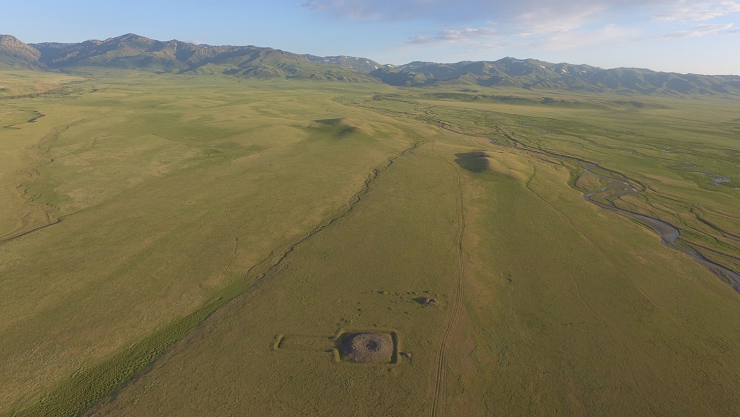1500 year old golden buckles with the oldest depiction of the Khan of the Heavenly Turks
Categories: Nálezy v Asii a Oceánii
At the very height of eastern Kazakhstan near the borders with China, Russia and Mongolia, two golden plaques from the 6th century were recovered from the Eleke Sazy tomb complex. Both were lying in the central chamber of a nobleman's tomb and bear what is probably the earliest ever depiction of the crowned leader of the Göktürks - the so-called "Heavenly Turks"...
The finds come from the Eleke Sazy site near Kazakhstan's eastern borders with China, Mongolia and Russian Siberia. The head of the excavation, Zainolla Samashev of the Kazakh Archaeological Institute, thinks the prince may have belonged to theof the Khagan Ashina clan - which means "ruler" and "khan" in ancient Turkish. The Ashinas founded and ruled two Turkic states between the fifth and eighth centuries before being replaced by the Uighurs.
The tomb complex consisted of stone and earth and is about 90 metres long and 50 metres wide. It is made up of two main sections, each surrounded by courtyard walls. The main part consisted of a square-shaped temple, which included a central burial chamber. Next to it, a 'labyrinth' was built for visitors and pilgrims.
Experts believe that the tomb belonged to a nobleman or prince in the 6th century, who was later "deified" and from the 7th century, when the tomb was enlarged, it became a place of pilgrimage. Plaques were found in the central chamber of the tomb, where the ashes of the owner were also deposited. One of the gold artefacts was severely damaged during cremation.
The crowned ruler is depicted on the plaques, which are about 37 mm in diameter, seated on a throne resembling two horses. On either side of him are kneeling servants offering food. "This clearly shows the sacred nature of power in ancient Turkic society," Samashev explained, adding that their owner must have had a considerably high social standing.
"The tomb probably evolved into a social and cultural center for people who worshipped Tegin and Göktürkru," collaborating archaeologist Haber Serhan Çınar of Ankara University told Turkish state television channel TRT. "The memorial complex at Eleke Sazy is linked to the ancient Turks' entry into the historical arena along with their spiritual, ideological, religious and philosophical trends," he added.
"The central room of the labyrinth contained a stone statue - now broken and headless - which probably represented the owner of the tomb," Samasheva said. In addition to the gold plaques, hundreds of other artifacts were discovered at the site - various silver, iron and bronze objects; such as weapons; horse harnesses or an amulet made of rock crystal," the senior archaeologist concluded.
Roman Nemec
Sources: thelivescience.com, archaeology.org

The complex at Eleke Sazy

Göktürk pilgrims entered the temple through a labyrinth of stone walls built next to the tomb

depiction of a khagan in a formal pose

The tomb itself was a square-shaped pyramid

The first plaque is intact, but has worse detail

Many other artifacts have been found at Eleke Sazy, including weapons; objects made of gold, silver, iron and bronze. And also this cruciform amulet

Archaeologists believe the temple complex was built in the seventh century around the tomb of a sixth-century Gokturk prince

The second plaque was badly damaged during cremation, but there is more detail on its surface. Both plaques were "clasps" for hanging belts that were threaded through the hole in their bases

detail of the Khan's crowned head
The article is included in categories: